
Annual Forbs Around Las Vegas, Vegetation Around Las Vegas
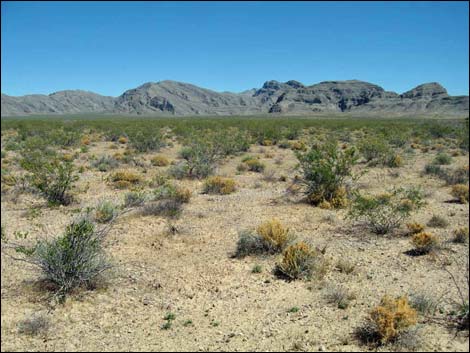 Desert Dodder (yellow) growing on shrubs |
General: Desert Dodder (Cuscuta denticulata) is yellow-orange, parasitic vine that commonly grows on shrubs, often completely covering the shrub. Small white flowers give rise to small, berry-like capsules from which the seeds are explosively ejected, thereby spreading seeds from one unhappy shrub to another. Identifying Mojave Desert Dodder species requires careful examination of flower parts. In this species: styles 2 (unfused); stigmas spherical (not elongate); corolla scales well developed, fringed; calyx shiny. Desert Dodder is a common component of shrub communities in washes and on upper bajadas in the Upper Sonoran (Mojave Desert Scrub) life zone. Other species of dodder are common elsewhere, including agricultural fields. Family: Dodder (Cuscutaceae). Other Names: Dodder. |
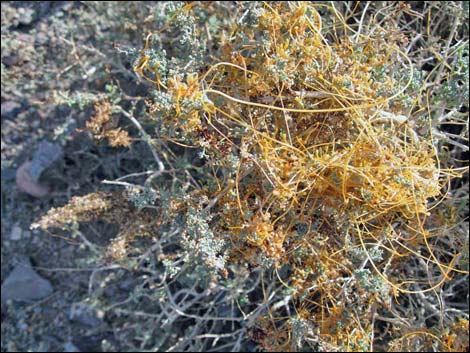 Desert Dodder looks like yellow "hair" on White Bursage |
Plant Form: Annual parasitic vine. Height: Vine growing on shrubs and subtrees. Stems: Thread-like, yellow-green to orange. Leaves: None. Flowers: Blooms late spring to fall. Styles 2, not fused or attached to other structures. Seeds: Fruit: berry-like capsule. Seeds small, explosively ejected from capsule. |
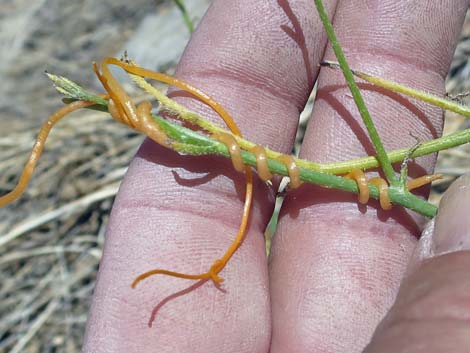 Desert Dodder vine wrapping around another shrub |
Habitat: Mostly grows on shrubs in dry, well-drained sandy, gravelly, and rocky soils in washes, desert flats, and upper bajadas. Elevation: To about 4,000 feet. Distribution: California to Utah, south into Baja California. Comments: This species is common in middle-elevation shrub communities in the Mojave Desert Scrub life zone. Other species are common elsewhere, including in agricultural fields (e.g., alfalfa). |
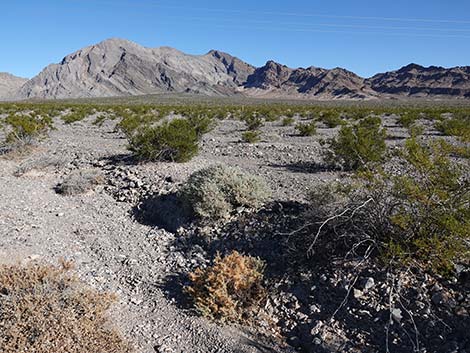 Typical view: parasitic dodder growing on a shrubs |
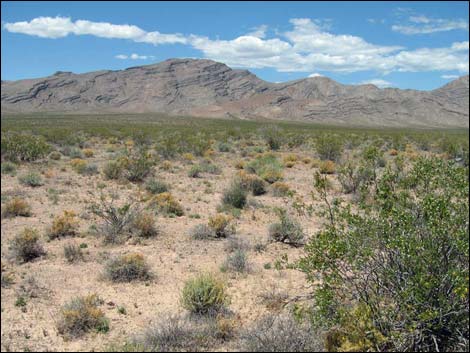 Typical view: parasitic dodder growing on scattered shrubs |
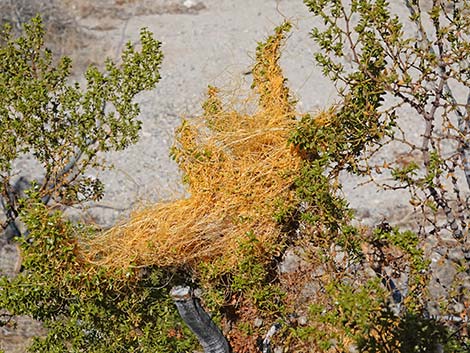 Desert Dodder on creosote bush |
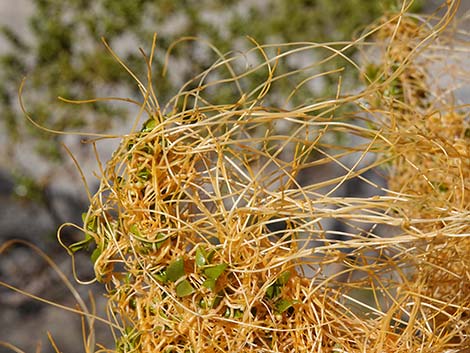 Desert Dodder on creosote bush |
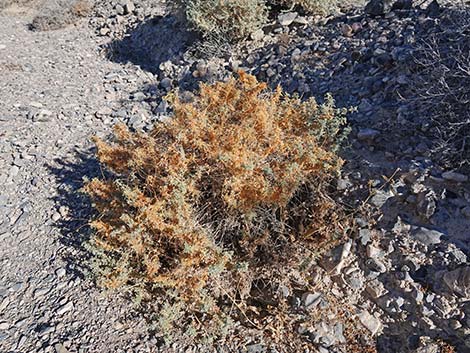 Desert Dodder on White Bursage |
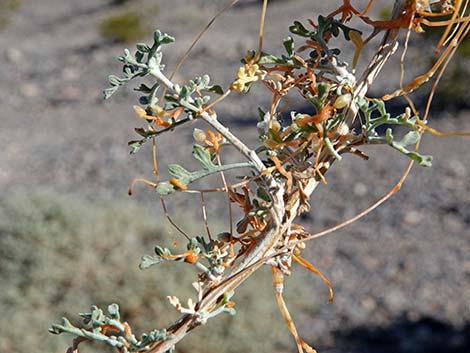 Desert Dodder on White Bursage |
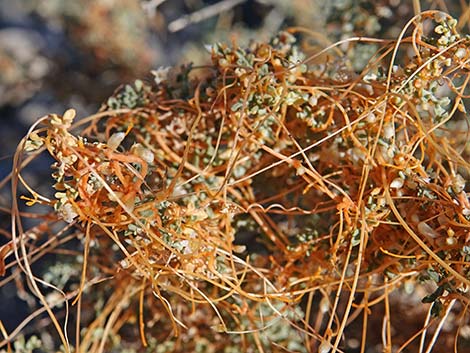 |
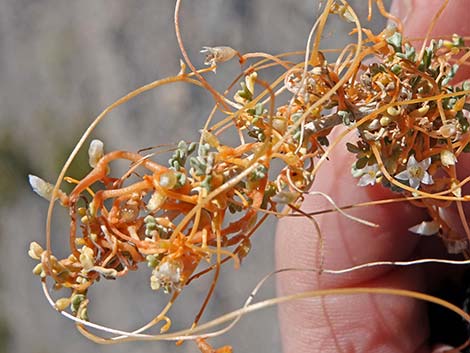 |
 Desert Dodder wrapping around stem of another shrub |
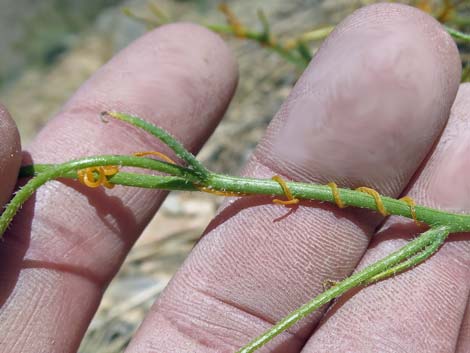 Desert Dodder wrapping around stem of another shrub |
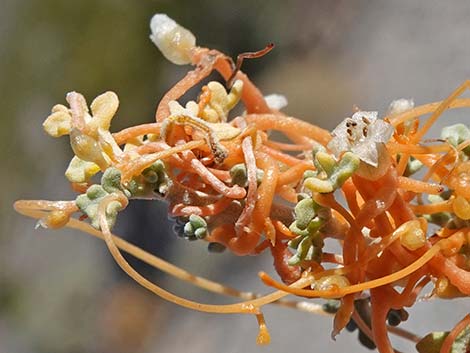 |
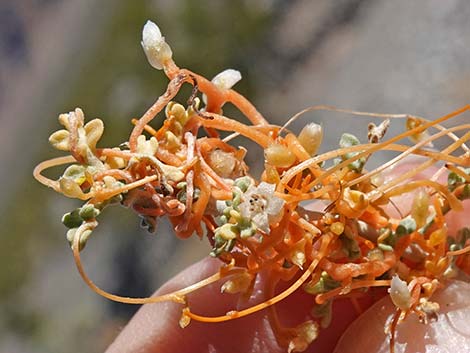 |
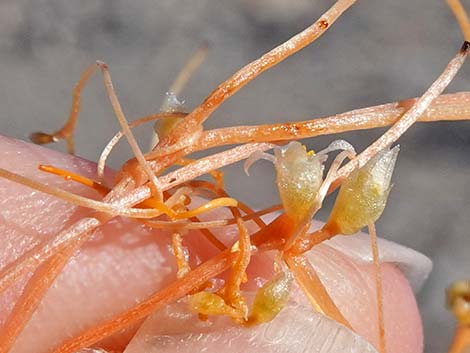 |
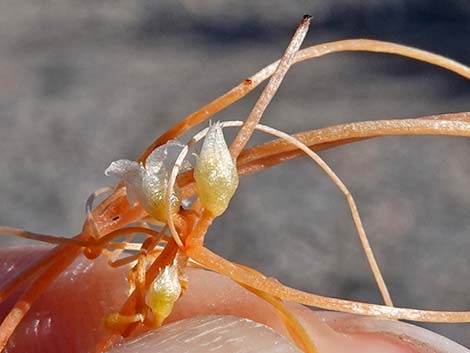 |
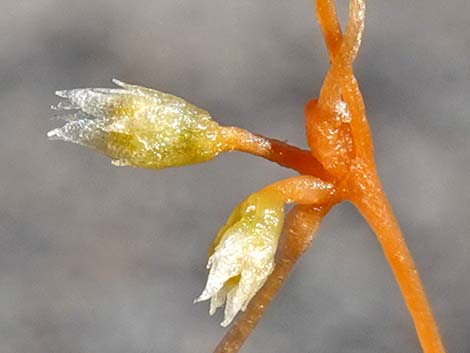 Sepals and petals similarly pointed |
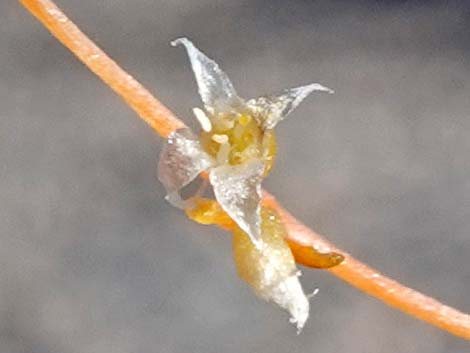 Petals pointed |
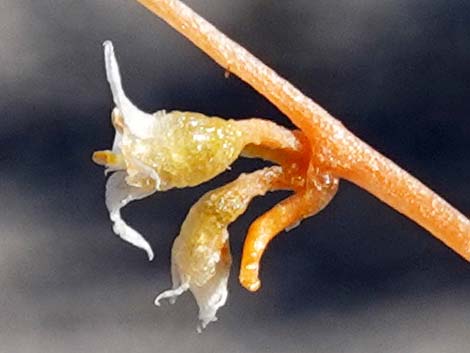 Calyx shiny |
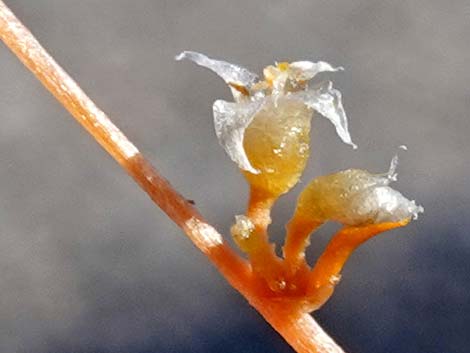 Calyx shiny |
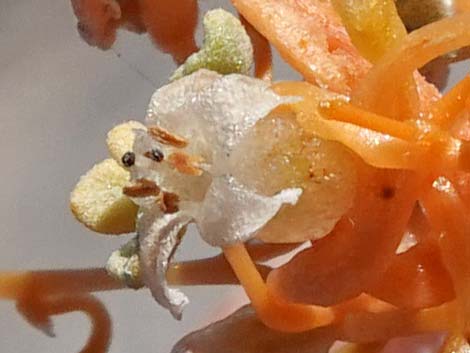 Styles 2, unfused |
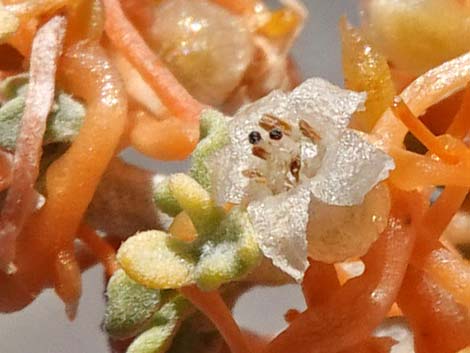 Styles 2, unfused |
Note: All distances, elevations, and other facts are approximate. Names generally follow the USDA database.
![]() ; Last updated 240616
; Last updated 240616
| All Annual Forbs | Plant Species Index | Glossary | Copyright, Conditions, Disclaimer | Home |